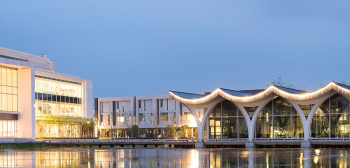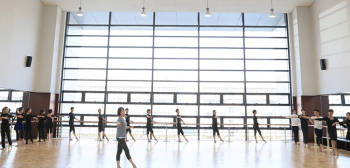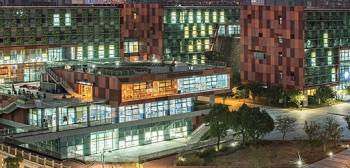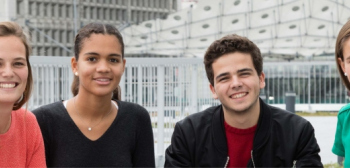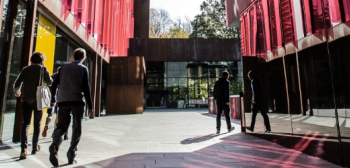- #=103 QS Global World Ranking
- PublicStatus
- Very HighResearch Output
- 36,492Total Students
- 3,401Faculty
- 3,117Int'l Students
QS Global World Ranking
The University’s position in the current QS World University Rankings.
The University’s position in the current QS World University Rankings.
Status
Whether the University is funded by the government of that country or state, or funded by private donations.
Whether the University is funded by the government of that country or state, or funded by private donations.
Research Output
The research intensity of the University, based on the number of papers output relative to the University’s size.
The research intensity of the University, based on the number of papers output relative to the University’s size.
Total Students
The number of full time equivalent students enrolled at the University.
The number of full time equivalent students enrolled at the University.
Faculty
The number of full time equivalent teaching staff employed by the University.
The number of full time equivalent teaching staff employed by the University.
Int'l Students
The number of full time equivalent international students enrolled at the University.
The number of full time equivalent international students enrolled at the University.
Nanjing University
About
Read more
Read less
Nanjing University is one of China's key comprehensive universities and it functions directly under the Ministry of Education. It is located in the ancient capital of six dynasties -- Nanjing. The University dates back to 1902 when Sanjiang Normal School was founded, and then evolved as Liangjiang Normal School, Nanjing Higher Normal School, National Southeast University, the Fourth Zhongshan University, and National Central University. On August 8, 1949, the National Central University was renamed National Nanjing University. In October 1950, as required by the Ministry of Education, the name was changed to Nanjing University. In 1952, when a nationwide readjustment of universities took place, some schools, such as the School of Engineering and the School of Agriculture, were separated from the University; meanwhile, the University merged with the School of Liberal Arts and the School of Sciences of the University of Nanking, which was founded in 1888. The new university remained Nanjing University and the campus of Nanjing University moved from Sipailou to Gulou. Today, Nanjing University consists of two campuses, one in Gulou and the other in Pukou with a total area of more than 3,600 mu (nearly 600 acres). It is one of the top universities in China, with beautiful campuses and modern teaching and research facilities. Its current President is Professor Jiang Shusheng, a physicist. The University celebrates its anniversary on May 20 of each year. Nanjing University's development has always been closely bound with the destiny of the Chinese nation and linked to her ever changing society. Nanjing Higher Normal University, the predecessor of Nanjing University, played a leading role in the area of Nanjing when the Youth Democratic Movement was held on May 4, 1919. In the early 1920s, it was in this university that a group of Chinese communist forerunners introduced the theory of Marxism to the public. The Second National Conference of Chinese Communist Youth League was also held at the University. During the Anti-Japanese War, organizations like the "Natural Sciences Forum" and the "Democracy and Science Forum", headed by Pan Shu, Liang Xi and Jin Baoshan, renowned professors of National Central University, eventually became the democratic party "Jiu San Society." During the Liberation War, teachers and students of National Central University stood at the forefront through out the democratic patriotic movement. On May 20, 1947, students of National Central University initiated an "Anti-Hunger, Anti-Civil War and Anti-Persecution Movement", later known as the "May 20th Patriotic Students Movement." After the National Central University was renamed Nanjing University, the truth-seeking convention was carried forward. In May 1978, one scholar at the Philosophy Department published, in the Guangming Daily, a well-known essay entitled "Practice Is the Sole Criterion for Testing Truth" and thus evoked "a heated discussion on the criterion of truth" that attracted nationwide attention. Since Chinas reform and opening, Nanjing University has gradually developed multi-disciplinary programs in humanities, social sciences, natural sciences, technological sciences, life sciences, modern engineering and management. At present, Nanjing University has 17 schools with 50 departments. It runs 74 undergraduate programs, 186 masters programs (with six programs designated by the University itself), seven professional masters programs; 16 primary disciplines for doctoral degrees, and 122 Ph.D. programs (with six programs designated by the University itself) as well as 18 post-doctoral stations. In addition, the University has 28 national key disciplines, 10 provincial key disciplines, and 6 national key laboratories. It also houses 11 national training bases for the research and teaching personnel in basic sciences and liberal arts, and three bases for humanities and social sciences research appraised by the Chinese Ministry of Education. Among the nearly 2,000 teaching faculty, there are 654 full professors, including 27 academicians of the Chinese Academy of Sciences, three academicians of the Chinese Academy of Engineering, four academicians of the Third-World Academy of Sciences, and one academician of the Russian Academy of Sciences. There are two premier scientists for the National Key Development Program in Basic Research (Project 973), and also 19 middle-aged and young scholars nationally appraised for remarkable contributions, 70 winners of National Outstanding Youth Fund, 36 specially appointed professors for the nations Cheung Kong Scholars Program, 29 scholars supported by the Supporting Plan for New Centurys Outstanding Talents of the Ministry...
About
Nanjing University is one of China's key comprehensive universities and it functions directly under the Ministry of Education. It is located in the ancient capital of six dynasties -- Nanjing. The University dates back to 1902 when Sanjiang Normal School was founded, and then evolved as Liangjiang Normal School, Nanjing Higher Normal School, National Southeast University, the Fourth Zhongshan University, and National Central University. On August 8, 1949, the National Central University was renamed National Nanjing University. In October 1950, as required by the Ministry of Education, the name was changed to Nanjing University. In 1952, when a nationwide readjustment of universities took place, some schools, such as the School of Engineering and the School of Agriculture, were separated from the University; meanwhile, the University merged with the School of Liberal Arts and the School of Sciences of the University of Nanking, which was founded in 1888. The new university remained Nanjing University and the campus of Nanjing University moved from Sipailou to Gulou. Today, Nanjing University consists of two campuses, one in Gulou and the other in Pukou with a total area of more than 3,600 mu (nearly 600 acres). It is one of the top universities in China, with beautiful campuses and modern teaching and research facilities. Its current President is Professor Jiang Shusheng, a physicist. The University celebrates its anniversary on May 20 of each year. Nanjing University's development has always been closely bound with the destiny of the Chinese nation and linked to her ever changing society. Nanjing Higher Normal University, the predecessor of Nanjing University, played a leading role in the area of Nanjing when the Youth Democratic Movement was held on May 4, 1919. In the early 1920s, it was in this university that a group of Chinese communist forerunners introduced the theory of Marxism to the public. The Second National Conference of Chinese Communist Youth League was also held at the University. During the Anti-Japanese War, organizations like the "Natural Sciences Forum" and the "Democracy and Science Forum", headed by Pan Shu, Liang Xi and Jin Baoshan, renowned professors of National Central University, eventually became the democratic party "Jiu San Society." During the Liberation War, teachers and students of National Central University stood at the forefront through out the democratic patriotic movement. On May 20, 1947, students of National Central University initiated an "Anti-Hunger, Anti-Civil War and Anti-Persecution Movement", later known as the "May 20th Patriotic Students Movement." After the National Central University was renamed Nanjing University, the truth-seeking convention was carried forward. In May 1978, one scholar at the Philosophy Department published, in the Guangming Daily, a well-known essay entitled "Practice Is the Sole Criterion for Testing Truth" and thus evoked "a heated discussion on the criterion of truth" that attracted nationwide attention. Since Chinas reform and opening, Nanjing University has gradually developed multi-disciplinary programs in humanities, social sciences, natural sciences, technological sciences, life sciences, modern engineering and management. At present, Nanjing University has 17 schools with 50 departments. It runs 74 undergraduate programs, 186 masters programs (with six programs designated by the University itself), seven professional masters programs; 16 primary disciplines for doctoral degrees, and 122 Ph.D. programs (with six programs designated by the University itself) as well as 18 post-doctoral stations. In addition, the University has 28 national key disciplines, 10 provincial key disciplines, and 6 national key laboratories. It also houses 11 national training bases for the research and teaching personnel in basic sciences and liberal arts, and three bases for humanities and social sciences research appraised by the Chinese Ministry of Education. Among the nearly 2,000 teaching faculty, there are 654 full professors, including 27 academicians of the Chinese Academy of Sciences, three academicians of the Chinese Academy of Engineering, four academicians of the Third-World Academy of Sciences, and one academician of the Russian Academy of Sciences. There are two premier scientists for the National Key Development Program in Basic Research (Project 973), and also 19 middle-aged and young scholars nationally appraised for remarkable contributions, 70 winners of National Outstanding Youth Fund, 36 specially appointed professors for the nations Cheung Kong Scholars Program, 29 scholars supported by the Supporting Plan for New Centurys Outstanding Talents of the Ministry...
Campus locations
No. 22 Hankou Road, Nanjing, CN,
No. 22 Hankou Road , Nanjing , Jiangsu , China , 210093
Similar Universities
The Chinese University of Hong Kong, Shenzhen
2001 Longxiang Blvd., Longgang District, Shenzhen
Duke Kunshan University
No. 8 Duke Avenue, Kunshan
The Central Academy of Drama, China
4E Hong Fu Middle Rd, Changping District
Xi'an Jiaotong Liverpool University
No.111 Ren'ai Road, Suzhou
IÉSEG School of Management, Lille - Paris, France
3 rue de la digue, Lille, Paris
University of Edinburgh Business School
29 Buccleuch Place, Edinburgh
Bocconi University
Via Sarfatti 25, Milan
Related content

Ten Most Affordable Cities t…
By
Chloe
Lane
Updated
169
0
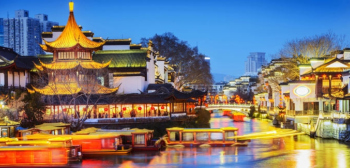
Nanjing
By
Sabrina
Collier
Updated
1.3k
46
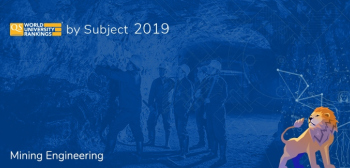
Top Mining Engineering Schoo…
By
Belkis
Megraoui
Updated
249
0
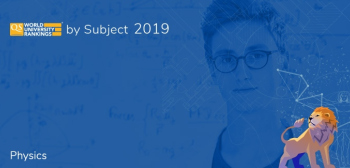
Top Universities for Physics…
By
Belkis
Megraoui
Updated
246
0

Top Universities in China 20…
By
Sabrina
Collier
Updated
3k
10

Top Universities in China 20…
By
Sabrina
Collier
Updated
3k
26

Top 10 Universities in China…
By
Sabrina
Collier
Updated
90
0
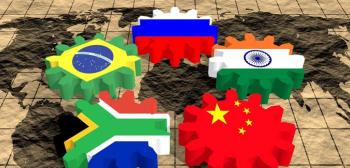
QS University Rankings: BRIC…
By
Laura
Bridgestock
Updated
53
0

Top 10 Universities in China…
By
Laura
T
Updated
221
0

Chinese Universities in the…
By
Laura
Bridgestock
Updated
217
0
Test preparations
Featured University


Sponsored
438
QS World University Rankings
-
10 UG & 47 PGTotal courses
-
Private for ProfitStatus
-
HighResearch output
Nanjing University
EN



